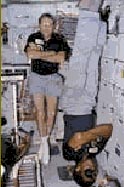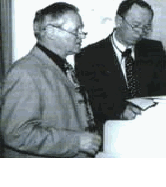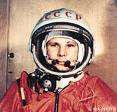.
Utilisation du QRS dans l'espace
Les missions à long terme dans l'espace accentuent le besoin de champs magnétiques pour empêcher l'ostéoporose. Les premiers voyageurs de l'espace sont retournés à la maison avec des densités osseuses inférieures parce qu'ils n'étaitent plus exposés à l'influence des champs magnétiques et gravitationnels de la terre. Il est devenu clair pour les scientifiques que même le champ magnétique terrestre, aussi petit soit-il, est absolument essentiel pour empêcher l'ostéoporose.
Depuis 1996, le QRS a été testé dans le programme de la station spatiale MIR. Il fut installé pour contrer la perte en calcium des os des cosmonautes. Les femmes et les hommes engagés dans des missions à long terme font face à une perte de densité osseuse parce qu'ils ne peuvent pas faire l'exercise requis en état d'apesanteur. (L'apesanteur produit de l'aérobie sans impact.) Toutefois, l'introduction du QRS réduisit les problèmes circulatoires, augmenta la quantité d'oxygène dans le flux sanguin, activa le métabolisme cellulaire et fournit une énergie additionnelle aux voyageurs de l'espac.Le système QRS nous apporte ces bénéfices directement sur Terre. 

(Cliquer ici pour lire la lettre du Dr Baranoy)
Professeur Dr. med. V. M. Baranoy, Directeur Médical chez EUROSPACE à Moscou.Professor Dr. J. Waldman (left)
and Professor Dr. med. V. M. Baranov (right),
speakers at the QRS Symposium 2001
in Darmstadt, Germany.
Use of the QRS in space
Long-term missions in space highlight the need for magnetic fields in preventing osteoporosis. Early space travelers returned home with lower bone densities because they had no longer been under the influence of the earth's magnetic and gravitational fields. It became clear to scientists that even the earth's magnetic field, as small as it is, is absolutely vital in preventing osteoporosis.

Yuri Gagarin’s 108-minute flight April 1961 opened an era of human space travel, but also spawned an entire branch of medical science, based on that one historic flight. The reason is that when he returned, his body was in near critical condition. What they discovered is that he had left the earth’s pulsed electro-magnetic fields (PEMF’s) and it nearly destroyed his mind and his body. When he returned he was like a battery operated toy, completely out of power – he had been drained in several key ways. What they went on to discover was that in a matter of MINUTES of NO exposure to healthy PEMF’s, cell metabolism breaks down causing almost instant bone loss, weak and tired muscles, suppressed metabolism, local disorientation and overall mental depression.
Probably the most valuable lesson learned that day, at the lifelong expense of Mr. Gagarin, was the critical necessity of not just pulsed electro-magnetic devices, but rather, the device specifically designed by and for the astronauts/cosmonauts – The QRS Quantron Resonance System – which has been used in every space suit and Russian space station since.
The Quantron Resonance System (QRS) was developed after 20 years of research by a team of international scientists, working specifically with the Russian space program, and was used in the program for the MIR space station.

The QRS was initially brought forward by Dr. Gerhard Fischer, PhD from Liechtenstein (Europe), with the assistance of German scientists Dr. Ulrich Warnke, PhD, professor and Director of the Department of Biomedicine at the University of Saarland (Germany), and the late Dr. H. L. König, PhD, and Chairman of Electrophysics at the Technical University of Munich (Germany). Dr. König speciality was studying how high frequency electro pollution affects the human body.
| Accueil |
|
Bienfaits | Études | Articles | Vidéos | FAQ | Modèles | Contact |
